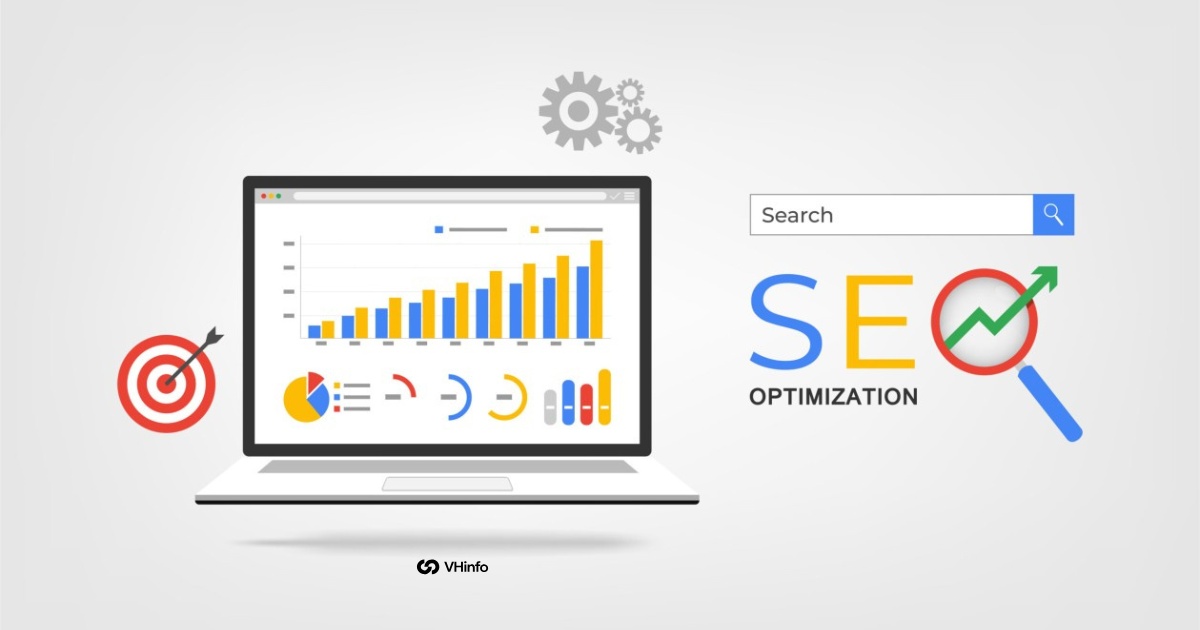Imagine you have a popular lemonade stand. At the end of the day, you want to know how your customers found you. Did they see a flyer at the library? Did a friend tell them about it? Knowing where your customers come from helps you decide where to put up more flyers.
On the internet, websites work similarly. A referring URL is a piece of information that tells you which web page a visitor was on right before they came to your site. This information is very important for growing your website.
It helps with search engine optimization (SEO) by showing you who is linking to you. This article will explain what a referring URL is, why it matters, and how you can use it to get more visitors.
What Is A Referring URL?

A referring URL is the address of the last web page a person was on before they clicked a link to your web page. Think of it as a digital footprint. If someone is reading a blog and clicks a link on that blog to visit your site, the blog’s address is the referring URL. The specific link they clicked is sometimes called a referral url. This information is automatically sent by a person’s browser to your web server.
This piece of referrer data is very useful. It lets you see which other websites are sending people your way.
For example, if you see that a lot of people are coming from a specific social media post, you know that post was a success. The referring page gives you a clue about what content people find interesting.
Every time someone clicks a link, this transfer of information happens behind the scenes. It’s a fundamental part of how the internet connects one webpage to another. Without the referring URL, it would be much harder to know how people find your content online.
The Role of the HTTP Referer Header
When your browser asks a web server for a web page, it sends a request. This request is part of the HTTP protocol, which stands for Hypertext Transfer Protocol. Think of HTTP as the mail service of the internet.
Along with the request for the new page, your browser sends extra information inside something called an HTTP header. This header is like the outside of an envelope; it has information for the server receiving the request.
One piece of information inside this header is the “Referer.” This part of the header holds the referring URL. So, when you click a link, your browser takes the URL of the current web page and puts it into the “Referer” header of the request for the new page.
The destination web server can then read this header to see where you came from. This process is automatic and happens almost every time you click a link to go from one site to another. This is how tools like Google Analytics get their referrer information.
Referring URL Vs. Destination URL
It is helpful to know the difference between a referring URL and a destination URL. They are two sides of the same coin.
- A Referring URL is the address of the web page where the visitor came from. It is the source of the click.
- A destination URL is the address of the web page where the visitor is going. This is the page they land on, and its address appears in the browser’s address bar.
For example, let’s say you are on a social media site and you see a link to an interesting blog post. The social media page you are on is the referring page, and its address is the referring URL.
When you click the link, you are taken to the blog post. That blog post is the destination, and its address is the destination URL. One tells you the past (where you were), and the other tells you the present (where you are now).
The “Referer” Misspelling and Its Origin
You might notice that in technical documents and in the HTTP header itself, the word is spelled “referer” (with one ‘r’).
This is not a typo you are making; it is a famous mistake in the history of the internet. The computer scientist who first wrote the official rules for the HTTP protocol misspelled the word “referrer” in the original document.
Because this spelling was part of the original code and specifications, it stuck. Computer systems and web servers were built to look for the “referer” header. Changing it would have broken many parts of the early internet.
So, even though “referrer” is the correct spelling in English, the technical term within the HTTP specification remains “referer.” When you look at web analytics reports or read articles, you will usually see the correct spelling, “referrer.”
But in the code and network logs, the mistake lives on.
Why Is Your Referring URL Data Important?

Referring URL data is important because of the following reasons:
Impact on SEO and Backlink Analysis
Search engine optimization, or SEO, is the practice of making your website more visible on search engines like Google.
One of the biggest factors in SEO is the number and quality of backlinks your site has.
A backlink is a link from another website to your site. Search engines see backlinks as votes of confidence. If a reputable site links to you, Google thinks your site must be valuable, which can help you rank higher for important keywords. This is where the referring URL comes in.
Your list of referring URLs is essentially a list of your backlinks. By analyzing this referrer data, you can see:
- Which websites are linking to you.
- Which of your pages they are linking to.
- How much traffic these external links are sending you.
This information is gold for SEO. You can identify your most valuable backlinks and try to get more links from similar sites.
At VH Info, we know that analyzing your backlinks is the best way to build a strong link-building strategy. Your referrer data shows you which referring sources are not just linking to you but also sending engaged visitors.
This is key for SaaS businesses that need to attract the right kind of audience.
Tracking Marketing Campaign Effectiveness
Imagine you are running several marketing campaigns at once. You might have an influencer marketing campaign, some ads on social media, and an email sent to your mailing list. How do you know which one is working best? The referring URL gives you the answer.
When you set up a campaign, you can track the links you share.
For example, if you pay an influencer to promote your product on their blog, you can check your analytics to see if their blog’s URL shows up as a top referring page. If it sends a lot of traffic, the campaign was a success.
If it sends very little, you know not to work with that influencer again. The same goes for social media. You can see which posts and which platforms are sending you the most visitors. This allows you to focus your time and money on the strategies that provide the best results.
Without tracking the referral url, you would just be guessing about your campaign’s performance.
Understanding User Behavior and Traffic Patterns
Your referrer data gives you deep insight into your audience. It shows you the path people take to find you.
By analyzing this data in a web analytics tool, you can answer important questions:
- Where does most of my traffic come from? Is it from search engines, social media, or other blogs?
- What kinds of websites link to me? Are they news sites, hobbyist blogs, or corporate pages?
- What are people interested in right before they visit my site?
For example, if you notice a lot of traffic coming from a blog that reviews software, it tells you that your audience is likely interested in technology and software comparisons. You could then create more content on your own webpage that speaks to this interest.
Analyzing traffic patterns from referring sources helps you create a better user experience because you have a clearer picture of who your visitor is and what they want. It is a key part of any good content strategy.
How to Find and Analyze Referring URL Information?

You do not need to be a technical expert to find your referring URL data.
Many tools are available that make it simple to see where your traffic is coming from. The most popular of these is Google Analytics, but there are others like Adobe Analytics. You can also access this information with a bit of code if you need more custom solutions.
However, it’s also important to know that this data can have some limitations.
Finding Referrers in Google Analytics
Google Analytics is a free and powerful web analytics application from Google. It is the most common tool used to track website traffic.
Finding your referral traffic report is straightforward.
- Log in to your Google Analytics account.
- On the left-hand menu, go to the “Reports” section.
- In the reports menu, click on “Acquisition,” and then “Traffic acquisition.”
- The report will show you traffic sources. You can look for the channel group called “Referral.”
This report will show you a list of every website domain name that has sent visitors to your site. You can click on each domain name to see the specific referring URL (the exact web page on that site) that sent the traffic.
This report is the starting point for any analysis of your backlinks and referral traffic. You can see how many users came from each referrer, how long they stayed, and if they completed any important actions on your site.
Accessing the Referring URL Programmatically
For those who are comfortable with code, you can access the referring URL directly. This is useful for creating dynamic content on your website. You can use a simple line of JavaScript code to get the referrer information from the user’s browser.
The command is document.referrer.
When this code runs on your webpage, it returns the referring URL of the user. You could use this to customize the user experience.
For example, you could show a special welcome message to visitors who come from a partner’s website. You could write code that says, “If the referrer is from website X, show banner Y.”
In addition to client-side JavaScript, server-side languages can also access this information.
Your web server can read the HTTP “Referer” header directly from the incoming request. This can be used for logging, redirects, or blocking traffic from certain sources before the page even loads. This method gives you more control over how you handle incoming traffic.
Common Limitations and Discrepancies
While referrer data is very useful, it is not always 100% accurate or complete. There are several reasons why a referring URL might be missing or incorrect.
- Direct Traffic: If a user types your URL directly into their address bar or clicks a bookmark, there is no referring page. This is categorized as “direct” traffic in your analytics.
- Privacy Settings: Many modern browsers and security tools give users the option to block the HTTP referrer header from being sent. When this happens, the referring URL will be empty.
- Secure to Non-Secure: If a user clicks a link on a secure site (HTTPS) that leads to a non-secure site (HTTP), most browsers will not pass the referrer information as a security measure. The default setting is to protect user privacy.
- Non-Web Sources: If someone clicks a link in a desktop email client, a mobile app, or a PDF document, the referring URL is often not passed along. This traffic may also show up as “direct.”
It’s good to keep these limitations in mind when you analyze your referrer data. It provides great clues, but it does not always paint the complete picture.
Best Practices For Managing Referring URL Traffic

Once you have access to your referring URL data, the next step is to use it effectively.
This means digging into the data to find opportunities, cleaning up messy information, and using your insights to guide your content and SEO strategy. Proper management of your referral traffic can have a big impact on your website’s growth.
Identifying High-Value Referral Sources
Not all referral traffic is created equal. A visit from one referring site might be more valuable than a hundred visits from another. A high-value referral source sends you visitors who are genuinely interested in your content, products, or services.
In your analytics report, look for referrers that have:
- High engagement rates (e.g., visitors who stay on your site for a long time).
- Low bounce rates (e.g., visitors who view more than one page).
- High conversion rates (e.g., visitors who sign up for your mailing list or buy a product).
When you find a blog, social media profile, or forum that sends you this kind of quality traffic, you have found a valuable partner.
You should consider reaching out to them to build a stronger relationship. This is a core practice at VH Info, where we help SaaS companies identify and partner with these high-value referral sources to build powerful backlinks.
How to Filter Out Referral Spam?
Sometimes, you might see strange or irrelevant websites in your referral traffic report. This is often “referral spam.” Spam bots visit your site just to get their own URL to show up in your public analytics reports, hoping you will click on it.
This spam can mess up your referrer data and make it hard to see your real traffic sources.
The best way to deal with this is to filter it out.
In Google Analytics, you can create filters that exclude traffic from known spammy domain names. You can find lists of common referral spammers online. By setting up these filters, you ensure that your reports are clean and accurate.
Keeping your data clean is important for making good decisions and for maintaining a healthy search engine optimization profile.
Using Referring URLs For Content Strategy
Your referring URLs can be a great source of inspiration for new content. Don’t just look at the domain name of the referrer; look at the full URL of the specific web page that is sending you traffic.
Visit that web page and ask yourself a few questions:
- What is this page about?
- What keywords are used on this page?
- In what context is my site being linked?
For example, if you find that a popular blog post about “The Best Tools for Remote Teams” is sending you traffic, it gives you a big clue.
Your audience is interested in remote work tools. You could then create more blog posts on your own site about remote work, productivity, and collaboration tools. This helps you create content that you already know your target audience is looking for.
Using your backlinks as a guide is a smart way to plan your content calendar.
FAQ’s:
Can A Referring URL Be Empty Or Blocked?
Yes, a referring URL can be empty or blocked for several reasons.
If a user types your website’s address directly into their browser, uses a saved bookmark, or clicks a link from a non-web source like an email application, there is no referring page to report. In these cases, the referrer field will be empty, and this traffic is usually counted as “direct.”
How Is A Referring URL Different From A Canonical URL?
A referring URL and a canonical URL serve completely different purposes.
A referring URL is about user traffic; it tells you where a visitor came from. A canonical URL is a technical SEO instruction for search engines. It tells Google’s web crawler which version of a page is the “master” copy when you have multiple pages with similar content.
This helps prevent duplicate content problems and consolidates your page authority for better search engine optimization.
What is “Direct” Traffic in the Context of Referrers?
“Direct” traffic is a category in web analytics for visitors who arrive at your site without a referring URL.
As mentioned, this happens when there is no referrer to pass along. The most common causes are a user typing your URL into the address bar, clicking a bookmark, or clicking a link from an offline source.
Sometimes, traffic that should have a referrer is miscategorized as direct because of technical issues or privacy settings.
Which HTTP Header Contains Referring URL Information?
The information is contained within the HTTP “Referer” header.
This header is part of the request that a browser sends to a web server when it asks for a web page. Despite the misspelling, this is the official name of the header that the entire internet uses to pass referring URL data from one server to another.
How Can I Stop My Website From Sharing Referring URLs?
If you do not want your website to be listed as a referring URL in other websites’ analytics, you can control this.
You can add a special meta tag to the HTML of your web page. The tag <meta name=”referrer” content=”no-referrer”> instructs the browser not to send the “Referer” header when a user clicks on any external links on that page. This can be done for privacy reasons or if you have links that involve sensitive information, such as those related to password resets or authentication.
Conclusion
The referring URL is a simple way to know where your website visitors come from. It helps you understand web traffic. This idea is important in web tools, like Google Analytics or Adobe Analytics. You can see which websites send people to yours.
Looking at referrer data often shows what works best in your ads or search plans. You also learn more about the people who visit your site. Managing links and referral visits helps your website grow steadily over time.
Checking your sources lets you find good partners and pick better content ideas. At VH Info, we give you easy tools and help to use this data well. We show you how to build strong outside links and grow your SaaS company by making smart choices from good data.
Start looking at your referral reports now to learn what your website traffic says about your business.



